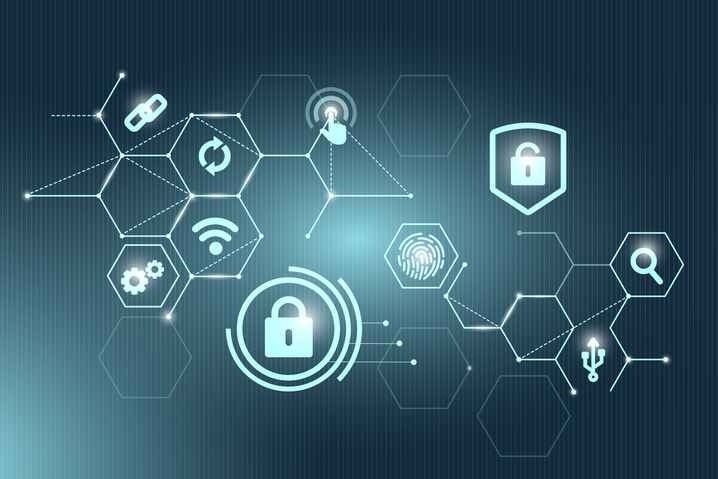Let’s look at some insights and best practices to help you safeguard your organization's Enterprise Resource Planning (ERP) and Customer Relationship Management (CRM) systems.
Data Encryption: A Shield for Your Data
When it comes to integrating ERP and CRM systems with your data platform, data encryption should be at the top of your security checklist. Ensure that data transmitted between systems and stored within databases is encrypted using robust encryption protocols like TLS (Transport Layer Security). This practice prevents unauthorized access and protects sensitive information from interception during transmission and while at rest.
TLS, previously known as SSL (Secure Sockets Layer), is a cryptographic protocol ensuring secure network communication. Its primary purpose is to establish a secure channel between two parties, typically a client (e.g., a web browser) and a server (e.g., a web server), to protect data in transit from eavesdropping, tampering, or interception.
The overview of the TLS process can be described as below:
- ClientHello: The client initiates the process by sending a message containing supported cryptographic algorithms, a random number, and other parameters.
- ServerHello: The server responds with its choice of cryptographic algorithms, a random number, and its digital certificate (if available).
- Key Exchange: The client and server exchange key information to generate a shared secret. This shared secret will be used for encryption and decryption. The Data Encryption Standard (DES), Triple DES (3DES), and Advanced Encryption Standard (AES) are commonly used symmetric encryption algorithms within TLS.
- Finished: Both parties confirm that the process is complete, and secure communication can commence.
Perfect Forward Secrecy (PFS) is a crucial feature in modern TLS implementations. It ensures that even if an attacker obtains the private key later, they cannot decrypt past communications. PFS achieves this by using temporary key exchange mechanisms, such as Diffie-Hellman (DHE) or Elliptic Curve Diffie-Hellman (ECDHE), to generate unique session keys for each session.
TLS is not immune to vulnerabilities. It's essential to stay informed about potential threats and promptly apply security patches and updates. Common TLS vulnerabilities include BEAST, POODLE, Heartbleed, and more. Mitigations may involve deactivating vulnerable cipher suites, upgrading to a newer TLS version, or implementing additional security measures.
Access Control: The Key to Data Protection
Access control is a fundamental aspect of security in any integrated system. IT managers should establish strict user access controls to limit who can access and modify data within ERP and CRM systems. Implement role-based access controls (RBAC) to ensure that users are granted only the necessary privileges to perform their tasks, reducing the risk of data breaches caused by careless or malicious users.

Authentication Mechanisms: Strengthening User Verification
Implement robust authentication mechanisms such as multi-factor authentication (MFA) to enhance security and ensure only authorized users can access the integrated systems. MFA adds an extra layer of protection by requiring users to provide multiple forms of identification before gaining access. Common MFA methods include something users know (like a password) and something they have (like a smartphone app-generated token), making it significantly more challenging for unauthorized parties to gain access.
Regular Auditing and Monitoring: Keeping a Strict Policy
Establish a robust monitoring and auditing process to maintain the security of your integrated systems. This involves tracking user activities, system changes, and data access. Implement security information and event management (SIEM) solutions to help you detect anomalies and potential security threats in real time. Regularly review and analyze audit logs to spot irregularities that may indicate security breaches.
Data Backup and Disaster Recovery: Preparing for the Worst
Data is the lifeblood of any organization, and ensuring its availability is crucial. IT managers should regularly back up data from ERP, CRM, and data platforms and establish a comprehensive disaster recovery plan. This strategy ensures that in the event of data loss or system failure, your organization can quickly recover and minimize downtime, preserving customer service continuity.
Security Patch Management: The Shield Against Vulnerabilities
Stay vigilant about security updates and patches for all integrated systems. Unpatched vulnerabilities can be an open invitation for cyberattacks. IT experts should regularly review and apply security patches to maintain a robust security posture. Automated patch management tools can simplify this process and ensure timely updates.
Employee Training and Awareness: The Human Factor
Security is not solely a technological concern; it's a people issue, too. Train your employees, from end-users to IT staff, on security best practices and awareness. Encourage them to be cautious about phishing attempts, social engineering, and other common attack vectors. Well-informed employees are your organization's first line of defense against many security threats.

Vendor Security: Trust but Verify
If you're using third-party ERP or CRM solutions, ensure that your vendors prioritize security. Regularly assess their security practices and compliance with industry standards. A security breach in a third-party system can have a cascading effect on your integrated ecosystem, affecting both your service quality and customer trust.
Conclusion
Integrating ERP, CRM, and data platforms is essential for modern organizations seeking operational efficiency and data-driven insights. However, it also introduces significant security challenges that must be addressed thoroughly. By implementing robust security measures, such as data encryption, access control, regular monitoring, and user training, IT experts and managers can ensure the safety and integrity of their organization's data.
Security is an ongoing process, and the threat landscape is constantly evolving. Stay proactive, adapt to emerging threats, and keep your team well-informed to maintain the highest level of security in your integrated systems. By doing so, you can continue offering high-quality services to your customers while safeguarding their sensitive information and strengthening your customer service and your organization's reputation.








